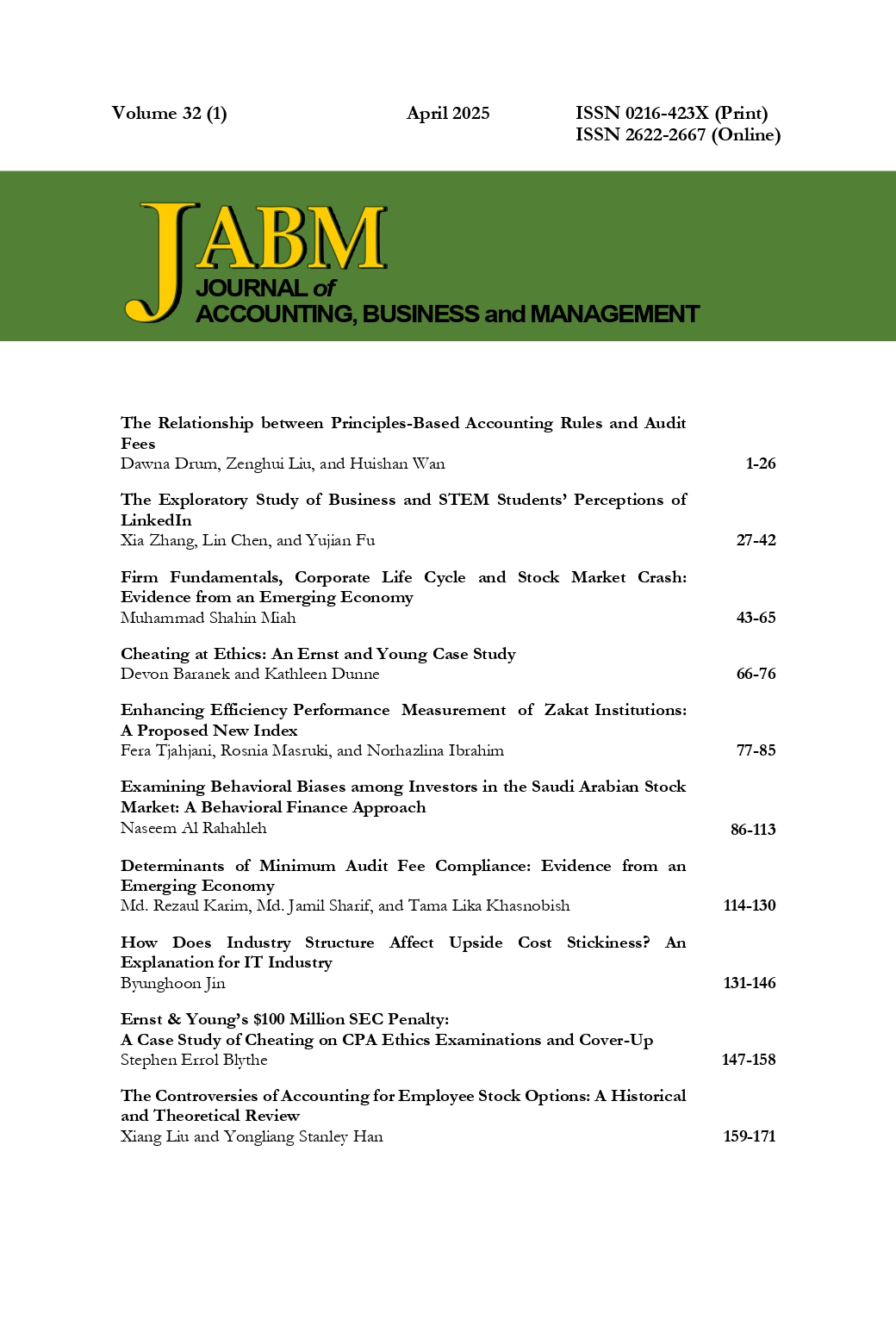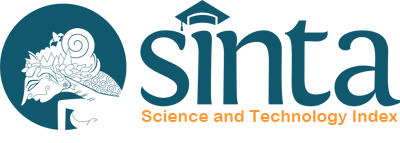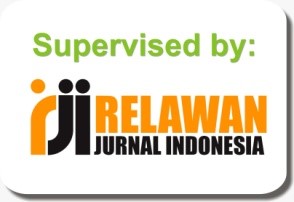How Does Industry Structure Affect Upside Cost Stickiness? An Explanation for IT Industry
Abstract
While prior literature on the asymmetric behavior of costs has predominantly focused on firms experiencing losses, a number of recent studies have shifted the focus to the opposite side, documenting that firms tend to hesitate to incur additional costs (i.e., make additional investments in resources) when faced with an unusually large increase in sales revenue. To extend the existing literature on this “upside cost stickiness,” this study examines how the asymmetric cost behavior of firms with an unusually large sales increase is influenced by factors such as industry characteristics and a firm’s position within the industry. Drawing on economic theory regarding the relationship between industry structure and corporate behavior, this research predicts that the degree of upside cost stickiness is weaker for industry leaders and diminishes as market concentration increases. As an application, this study further predicts that upside cost stickiness is weaker for firms in the concentrated IT industry. These predictions are strongly supported by empirical evidence based on 135,649 unique firm-year observations.
Downloads
References
Ang, S., Slaughter, S., & Yee Ng, K. (2002). Human capital and institutional determinants of information technology compensation: Modeling multilevel and cross-level interactions. Management Science, 48(11), 1427-1445. https://doi.org/10.1287/mnsc.48.11.1427.2.
Banker, R. D., Byzalov, D., & Chen, L. T. (2013). Employment protection legislation, adjustment costs and cross-country differences in cost behavior. Journal of Accounting & Economics, 55(1), 111-127.
Bao, B. -H., & Bao, D. -H. (2001). Characteristics of earnings versus book value firms in the Taiwan stock exchange. Advances in International Accounting, 14, 101-114.
Basu, S. (1977). Investment performance of common stocks in relation to their price‐earnings ratios: A test of the efficient market hypothesis. The Journal of Finance, 32(3), 663-682. https://doi.org/10.2307/2326304.
Bessen, J. E. (2016). Accounting for rising corporate profits: Intangibles or regulatory rents? (pp. 16-18). Boston University School of Law, Law & Economics Research Paper.
Blundell, R., Griffith, R., & Van Reenen, J. (1999). Market share, market value and innovation in a panel of British manufacturing firms. The Review of Economic Studies, 66(3), 529-554. https://doi.org/10.1111/1467-937X.00097.
Bustamante, M. C., & Frésard, L. (2021). Does firm investment respond to peers’ investment? Management Science, 67(8), 4703-4724.
Canalys. (2022). US PC shipments grew 1% to reach 135 million in 2021. Diambil pada 2 Agustus 2022, dari https://www.canalys.com/newsroom/US-PC-market-Q4-2021.
Ceccucci, W., & Gius, M. (2008). Estimating the determinants of CEO compensation in the information technology industry. Journal of Computer Information Systems, 48(2), 34-43.
Chen, C. X., Lu, H., & Sougiannis, T. (2012). The agency problem, corporate governance, and the asymmetrical behavior of selling, general, and administrative costs. Contemporary Accounting Research, 29(1), 252-282.
Chen, S., & Ma, H. (2017). Peer effects in decision-making: Evidence from corporate investment. China Journal of Accounting Research, 10(2), 167-188.
Cooper, R., & Kaplan, R. S. (1999). The design of cost management systems: Text and cases (2nd ed.). Upper Saddle River, NJ: Prentice Hall.
Covarrubias, M., Gutiérrez, G., & Philippon, T. (2020). From good to bad concentration? US industries over the past 30 years. NBER Macroeconomics Annual, 34(1), 1-46.
Dasgupta, P., & Stiglitz, J. (1980). Uncertainty, industrial structure, and the speed of R&D. The Bell Journal of Economics, 11(1), 1-28. https://doi.org/10.2307/3003398.
Dierynck, B., Landsman, W. R., & Renders, A. (2012). Do managerial incentives drive cost behavior? Evidence about the role of the zero earnings benchmark for labor cost behavior in private Belgian firms. The Accounting Review, 87(4), 1219-1246. https://www.jstor.org/stable/23246275.
Etro, F. (2004). Innovation by leaders. The Economic Journal, 114(495), 281-303. https://doi.org/10.1111/j.1468-0297.2004.00210.x.
Fazzari, S. M., & Petersen, B. C. (1993). Working capital and fixed investment: New evidence on financing constraints. The RAND Journal of Economics, 328-342. https://doi.org/10.2307/2555961.
Frésard, L., & Valta, P. (2016). How does corporate investment respond to increased entry threat? The Review of Corporate Finance Studies, 5(1), 1-35.
Griliches, Z. (2000). R & D, education, and productivity: A retrospective. Harvard University Press.
Grullon, G., Larkin, Y., & Michaely, R. (2019). Are US industries becoming more concentrated? Review of Finance, 23(4), 697-743. https://doi.org/10.1093/rof/rfz007.
Hatch, N. W., & Dyer, J. H. (2004). Human capital and learning as a source of sustainable competitive advantage. Strategic Management Journal, 25(12), 1155-1178.
Jin, B. (2021). Upside cost stickiness and its determinants. Journal of Managerial Issues, 33(4), 331-349.
Jin, B., & Banker, R. D. (2025). Impact of CEO compensation structure on asymmetric cost behavior. Journal of General Management, In Press.
Jin, B., & Cary, J. C. (2019). Are middle managers’ cost decisions sticky? Evidence from the field. Economic & Business Review, 21(2), 243-273.
Kama, I., & Weiss, D. (2013). Do earnings targets and managerial incentives affect sticky costs? Journal of Accounting Research, 51(1), 201-224. https://www.jstor.org/stable/23473283.
Levina, N., & Xin, M. (2007). Research note-Comparing IT workers’ compensation across country contexts: Demographic, human capital, and institutional factors. Information Systems Research, 18(2), 193-210. https://www.jstor.org/stable/23015402.
Li, J., & Yao, F. K. (2010). The role of reference groups in international investment decisions by firms from emerging economies. Journal of International Management, 16(2), 143-153.
Link, A. N., & Neufeld, J. L. (1986). Innovation versus imitation: Investigating alternative R & D strategies. Applied Economics, 18(12), 1359-1363.
Masterson, L. (2022). The 50 largest auto insurance companies. Forbes.
Mithas, S., & Krishnan, M. S. (2008). Human capital and institutional effects in the compensation of information technology professionals in the United States. Management Science, 54(3), 415-428. https://www.jstor.org/stable/20122396.
Mithas, S., & Lucas Jr., H. C. (2010). Are foreign IT workers cheaper? US visa policies and compensation of information technology professionals. Management Science, 56(5), 745-765. https://www.jstor.org/stable/40660792.
Nelson, R. R., & Phelps, E. S. (1966). Investment in humans, technological diffusion, and economic growth. The American Economic Review, 56(1/2), 69-75. https://www.jstor.org/stable/1821269.
Noreen, E. W., & Soderstrom, N. S. (1997). The accuracy of proportional cost models: Evidence from hospital service departments. Review of Accounting Studies, 2(1), 89-114.
Novy-Marx, R. (2007). An equilibrium model of investment under uncertainty. The Review of Financial Studies, 20(5), 1461-1502. https://www.jstor.org/stable/4494810.
Petersen, M. A., & Rajan, R. G. (1997). Trade credit: Theories and evidence. The Review of Financial Studies, 10(3), 661-691. https://www.jstor.org/stable/2962200.
Rai, A., Arikan, I., Pye, J., & Tiwana, A. (2015). Fit and misfit of plural sourcing strategies and IT-enabled process integration capabilities. MIS Quarterly, 39(4), 865-886. https://www.jstor.org/stable/26628655.
Ramaseshan, B., & Chong, S. (2000, 5 Agustus). Determinants of satisfaction of international joint venture performance: Some evidence from the Australian information technology industry (vol. 11, pp. 340). In Summer Marketing Educators Conference of the American Marketing Association. Chicago.
Rashid, A., & Said, A. F. (2021). Peer effects on investment decisions: Do industry leaders and young firms behave differently? Global Business Review, 25(3), 791-811. https://doi.org/10.1177/0972150921993674.
Rhoades, S. A. (1993). The Herfindahl-Hirschman index.
Rockart, J. F., Earl, M. J., & Ross, J. W. (1996). Eight imperatives for the new IT organization. Sloan Management Review, 38(1), 43-56.
Statcounter. (2021). Desktop operating system market share in United States of America. Diambil pada 2 Agustus 2022, dari https://gs.statcounter.com/os-marketshare/desktop/united-states-of-america/2021.
Stigler Center. (2019, 16 September). Stigler committee on digital platforms: Final report (pp. 1-132). https://books.google.co.id/books?id=LizKEAAAQBAJ&printsec=frontcover&hl=id&source=gbs_ge_summary_r&cad=0#v=onepage&q&f=false.
Whited, T. M. (1992). Debt, liquidity constraints, and corporate investment: Evidence from panel data. The Journal of Finance, 47(4), 1425-1460. https://doi.org/10.2307/2328946.














